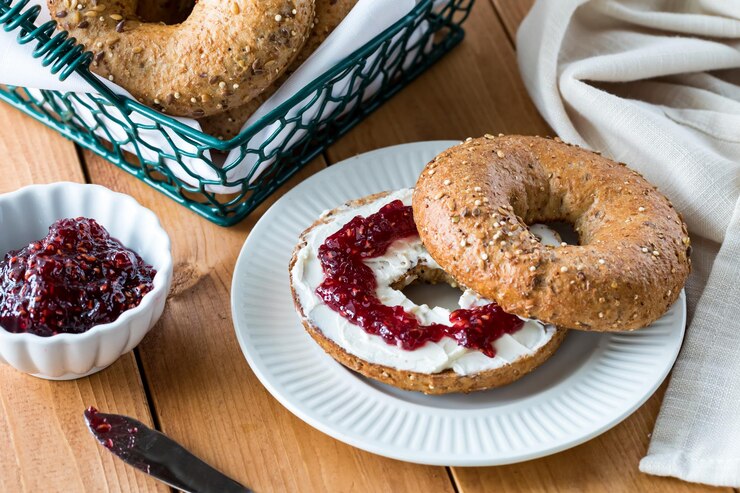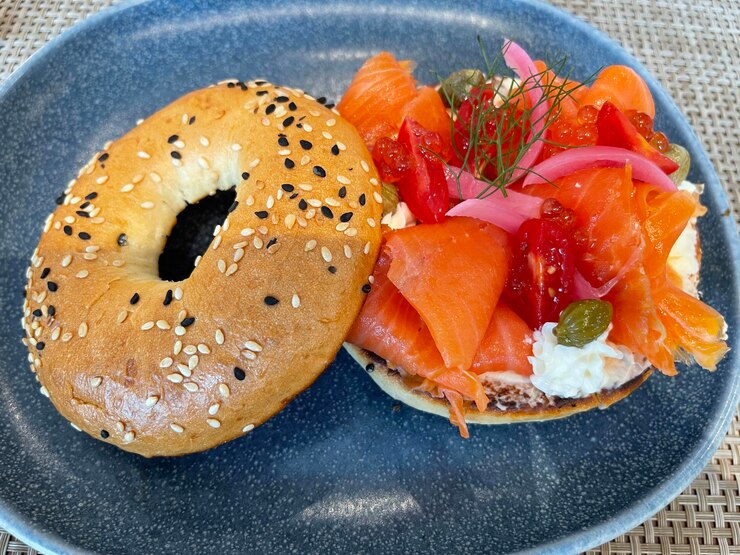Introduction (100 words)
Jump into the world of protein bagels recipes, where soft, chewy bagels meet muscle‑building nutrition! Whether you’re fueling up for a workout or craving a hearty breakfast, these recipes offer the perfect balance of flavor and function. In this article, we’ll share nostalgic baking stories, practical tips, and easy tweaks so you can make protein-packed bagels at home. You’ll learn how to customize fillings, choose the best protein sources, and whip up a dough that tastes just like your favorite bakery—but better for you. Let’s roll the dough and build strength, one delicious bite at a time!

Part 1: The Story & Intro to Protein Bagels Recipes (300 words)
Why I fell in love with protein-loaded bagels
Back in college, I always grabbed a plain bagel before hitting the gym—until I discovered the power of adding protein. One morning, I folded Greek yogurt into the dough and marveled at how textures stayed soft and flavors stayed rich. That’s when protein bagels recipes became my go‑to hack: they bridge the gap between indulgence and fuel.
From family breakfasts to fitness fueling
My grandmother used to make bagels on Sunday mornings, dense and fluffy, with butter melting into every bite. In her memory, I reinvented that classic using whey and oat flour to turn a nostalgic ritual into a nutritious, energizing ritual. I call them “heritage meets health” starters—each one whispering comfort while delivering a solid protein punch. Want options? Try adding chia seeds or mashed beans for an extra boost.
Throughout this section, I’ll show you how to blend memories and macros, using our protein bagels recipes template to honor tradition and build strength. I’ll sprinkle in tips on dough hydration for that perfect chew, plus how to balance flavor with functional ingredients like Greek yogurt, whey, and whole‑grain flour.
Let’s dive into subheadings to lay out the recipe framework:
- This is what gives our protein bagels recipes their signature chew and softness
Learn how much Greek yogurt or protein powder to use so your bagels have structure and bite. - Many protein bagels recipes fail due to dry ingredients—ours stay moist and balancedExplore add‑ins—seeds, spices, even grated cheese—that elevate flavor without compromising chew or nutrition.
Table of Contents
Let’s look at how to make delicious and diverse protein bagels recipes that fuel your day.
When you’re exploring high protein bagel recipes, the real fun begins with creative variations and hearty fillings. It’s where nutrition meets taste, and every bite feels like a mini celebration of flavor and fuel.
Crafting the perfect high‑protein bagel base
Start with a reliable dough: swap half the all‑purpose flour for whole‑grain or oat flour and stir in whey or plant-based protein powder. The key is balance—use about 20–25 g of protein powder per 250 g of flour to maintain chewiness without drying. For softer results, mix in a couple of tablespoons of Greek yogurt or cottage cheese. Want inspo? Try our overnight oats breakfast bowl or our Greek yogurt muffins for textures that play well in bagels.
All of these pair well with any variation from your favorite protein bagels recipes.
Once your bagels are baked, top or sandwich them with smart fillings. Smoked turkey, sliced egg whites, avocado, hummus—any of these can bump up protein while keeping flavors fresh. My go‑to combo? Lox with whipped feta and spinach. Another favorite is grilled chicken salad with Greek yogurt dressing.
For a plant-based twist, a spicy chickpea and tahini spread works great—a nod to our vegan chickpea salad wrap recipe.
These fillings aren’t just flavorful—they’re strategic. Paired with a protein-rich base, they create balanced meals ideal for breakfast or lunch after a workout. Plus, the textures—from creamy spreads to tender meats—play off the chewy bagel for satisfying contrast.
Ready to bake and build? Next, we’ll explore gluten-free and diet-friendly variations that fit different goals and dietary needs. We’ll share tips on ingredient swaps (like almond or coconut flour) and adjusting hydration so every bagel turns out just right. Let’s keep the energy high and the flavors bold!
When customizing your go-to protein bagels recipes, going gluten-free opens exciting doors
These gluten-free protein bagel recipes are perfect when you want all the flavor and fuel—but without gluten. Let’s dive into how to achieve fluffy, chewy bagels that meet dietary needs and taste incredible.

Swapping to gluten-free flours
Start by replacing wheat flour with almond, oat, or a quality gluten-free blend. I usually use a blend of 150 g brown rice flour and 100 g almond flour, plus 20 g whey protein or a plant-based powder. Add 1 teaspoon xanthan gum to help bind, and increase the liquid by 10%—usually water or unsweetened almond milk. For more texture, toss in 1–2 tablespoons flaxseed meal or chia seeds. For similar adaptations, check out our gluten-free banana bread or almond flour pancakes recipes where these swaps shine.
Keeping nutrition balanced in special diets
Whether you follow keto, paleo, or low-carb, you can adjust ingredients to fit your plan. For keto, use cream cheese and almond flour with egg whites—skip traditional yeast and boil partially for that bagel-like crust. In paleo versions, use cassava flour with collagen peptides for protein. Pair these bagels with nutrient-dense fillings like smoked salmon or nut butter to round out macros.
Inspired? Try our keto avocado toast bagel or paleo veggie-filled wrap to see how fillings adapt.
These tailored recipes show how versatile high protein bagel recipes can be—no matter your dietary preferences. With a few strategic swaps and tweaks, you’ll get delicious, nourishing bagels that fit your lifestyle.
Part 4: Expert Baking Tips & Troubleshooting for Perfect Protein Bagels (Keyword Variation: “protein bagel baking tips”) (300 words)
Mastering protein bagel baking tips is where homemade bagels truly elevate. With attention to details like gluten development, boiling, and oven techniques, your bagels turn out beautifully chewy, golden, and packed with protein.
Mastering this gives your protein bagels recipes bakery-level results every time. and crust
To achieve that classic bagel chew, knead your dough longer than usual—about 10 minutes by hand or 5 minutes in a mixer. This helps gluten structure, crucial when using added protein. Let the dough rest for 5 minutes mid-knead if it feels stiff. After shaping, proof the bagels in a warm spot until they double—roughly 60–75 minutes at 75 °F.
For a shiny crust, boil the shaped bagels in water with a tablespoon of honey or maple syrup for 60 seconds per side before baking. Then bake at 425 °F on a silicone mat or parchment-lined stone for 18–20 minutes. These protein bagel baking tips ensure that desirable contrast between a soft interior and crisp exterior.

Troubleshooting common issues
- Dense or gummy centers? Most often, the dough didn’t rise enough or the protein ratio was too high. Let it proof a bit longer, or reduce protein powder by 10–15%.
- Cracked exteriors? Too dry a dough. Boost hydration by 5% (a teaspoon or two of water) until dough feels pliable and slightly tacky.
- Flat or misshapen bagels? You either undermined the dough during shaping or didn’t seal the hole tightly. Roll the edges firmly and allow a brief final rest before boiling.
- Bland flavor? Add a dash of onion powder, garlic granules, or dried herbs into the dough—cheesy, spicy, or savory flavor works wonders too!
Incorporating these protein bagel baking tips will transform your high-protein bagels from good to great. Once you conquer the basics, you can experiment with flavored doughs—cinnamon-raisin, everything spice, jalapeño-cheddar—the possibilities are endless. Just remember: good protein bagels are about texture, taste, and a little trial-and-error.
FAQs
What can I put in my bagel for protein?
Try fillings like smoked salmon, egg whites, lean chicken or turkey, Greek yogurt spreads, cottage cheese, hummus, or nut butter to boost protein efficiently.
Are protein bagels actually healthy?
Yes—when you lean on whole‑grain or alternative flours and include quality proteins, protein bagels offer sustained energy, satiety, and muscle benefits. Just watch portion size and added sugar.
What is the best protein for bagels?
Whey protein powder adds smooth texture and neutral flavor. For dairy-free, pea or soy protein work well. You can also boost dough using Greek yogurt, cottage cheese, or egg whites.
What are the two ingredients in protein bagels?
Essentially, flour (or gluten-free flour blend) and a protein source (like protein powder or Greek yogurt). From there, you build hydration, yeast, and flavor.
Conclusion
Even for special diets, these protein bagels recipes deliver the flavor and nutrition you want.
You’re now equipped with flavorful, protein-rich bagel recipes tailored to all diets and baking styles. From nostalgia-inspired doughs to gluten-free swaps and pro baking tips, your homemade bagels will be delicious, nutritious, and impressive every time. Keep experimenting with flavors and fillings—and enjoy this satisfying twist on a breakfast classic.
Bookmark your favorite protein bagels recipes and try new ones weekly—there’s no limit!

